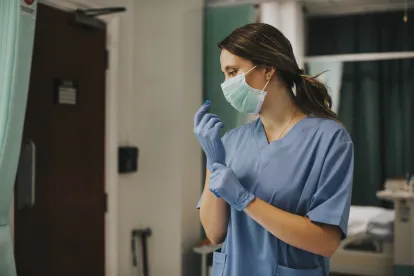People sometimes use the term “brain-dead” flippantly, referring to a clueless co-worker or zoned out gamer, but to families of patients with disorders of consciousness [DoC], it’s no joke. DoC include coma, minimally conscious state, persistent vegetative state, also known as unresponsive wakefulness syndrome, and brain death. The majority of DoC are due to traumatic brain injuries [TBI] which are caused by blunt trauma, or stroke or other events leading to lack of oxygen. Often it can take months or years, if ever, to emerge from a coma or other DoC, but scientists are closing in on a possible way out.
Using Ultrasound to Emerge from a Disorder of Consciousness
In a recent study published in Brain Stimulation, neurologists at UCLA used a technique called low-intensity focused ultrasound (LIFU), to stimulate neurons in the thalamus, an egg-shaped structure in the brain responsible for processing information related to movement. Three patients with DoC – two males and one female, all between the ages of 50-60 – underwent two LIFU treatments, one week apart. While the results are only preliminary, the neurologists reported that the procedure was safe and well-tolerated by all patients, did not cause any harm or stress, and two out of the three patients exhibited clinically significant increases in responsiveness after the LIFU sessions, as compared to their baseline.
-
Patient #1 was a male, age 56, 14.5 months post-injury (hemorrhagic stroke).
After the LIFU treatment, this patient demonstrated, for the first time, the ability to correctly nod or shake his head to indicate “yes” or “no” when asked "Is X your name?" or "Is Y your wife's name?" He also demonstrated, again for the first time, the ability to functionally use a pen on paper and bring a bottle to his mouth, and to correctly respond to other questions asked of him. Unfortunately, at the 3 and 6 month follow-ups, he had regressed to his baseline status. -
Patient #2 was a female, age 50, 32 months post-injury (cardiac arrest, hypoxia).
After the LIFU treatment, this patient demonstrated, for the first time, the ability to respond to commands to move her finger or her head, and the ability to recognize different objects (like a pencil and a comb) – neither of which she had been able to do previously. Her progress was maintained throughout the 3 and 6-month follow-up assessments.
Small, But Great – Context Counts
While these achievements may seem small to some, families caring for patients with DoC have often been faced with monumental decisions regarding treatment choices, living and care facilities, and caretaker roles. The financial struggle is very real, and there may be a lawsuit involved if the DoC was due to claimed negligence or product liability. And as noted by Womble Bond Dickinson’s Certified Life Care Planner Regina Parimi, MSN, CLCP, “With the advent of new medical technology and treatments, we may see more long-term improvement in patients with DoC going forward. This could impact life care plans.” Taking all of this into consideration, recognition of a comb or knowing your wife’s name are HUGE steps forward if you have not been able to do them previously. More importantly, they are “diagnostic markers of emergence from a minimally conscious state and thus a disorder of consciousness” according to study authors. And normally, such recovery “occurs slowly over several months and more typically years, not over days and weeks, as we show,” according to Martin Monti, a UCLA professor of psychology and neurosurgery, and one of the senior authors of the paper.
Currently, the team of scientists is “excited” by their results, but also cautious, because LIFU is still an experimental technique and years away from being widely available to the public. However, they are planning additional studies, including clinical trials, once the world is safely through the COVID-19 pandemic.




 />i
/>i
